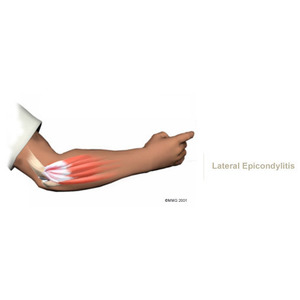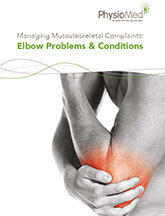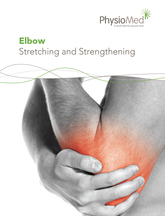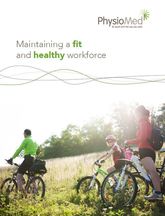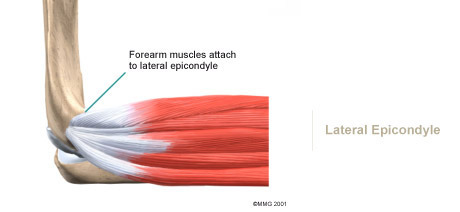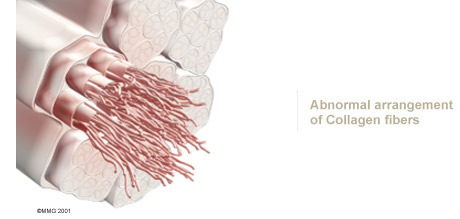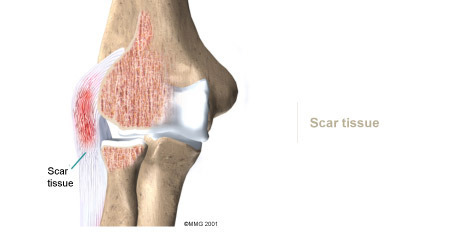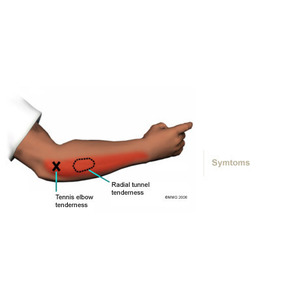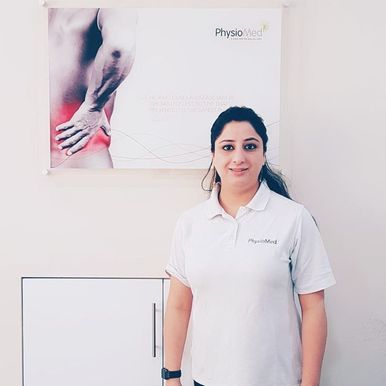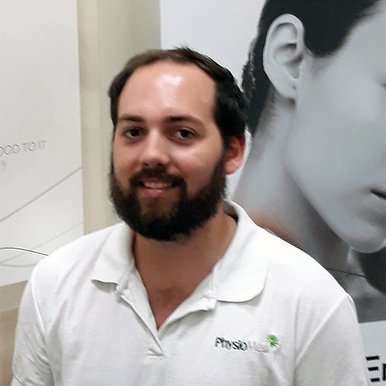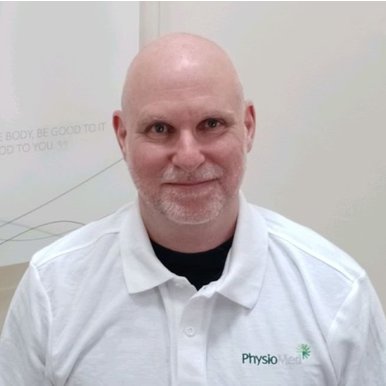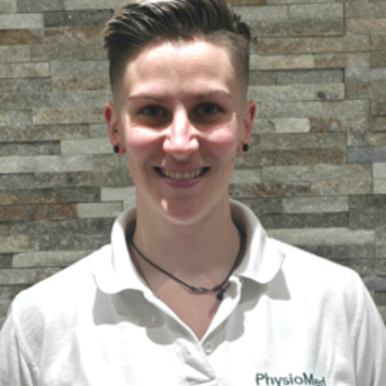The key to nonsurgical treatment is to keep the collagen in your tendon from breaking down further. Our goal is to help the tendon heal.
When you begin your physiotherapy, our physiotherapist at Physio Med will give you tips on how to rest your elbow and how to do your activities without putting extra strain on your elbow. We may apply tape to take some of the load off the elbow muscles and tendons. Our physiotherapist may advise that you wear an elbow strap that wraps around your upper forearm in a way that relieves the pressure on the tendon attachment.
We may apply ice and electrical stimulation to ease pain and improve healing of the tendon. Our physiotherapist will also instruct you in exercises used to gradually stretch and strengthen the forearm muscles.
Because tendonosis is often linked to overuse, we will work with you to reduce repeated strains on your elbow. When symptoms come from a particular sport or work activity, our physiotherapist will observe your style and motion with the activity. We may provide tips about how to perform the movement so your elbow is protected. We can also check your sports equipment and work tools and suggest how to alter them to keep your elbow safe.
Although recovery time varies for each patient, in cases where the tendon is inflamed, your Physio Med rehabilitation program is usually only needed for four to six weeks. When symptoms are from tendonosis, you can expect healing to take longer, usually up to three months. If your tendonosis is severe, it may take at least six months for complete healing.
Physician Review
Your doctor may order X-rays of your elbow. The X-rays mostly help your doctor rule out other problems with the elbow joint. The X-ray may show if there are calcium deposits on the lateral epicondyle at the connection of the extensor tendon.
Tennis elbow symptoms are very similar to a condition called radial tunnel syndrome. This condition is caused by pressure on the radial nerve as it crosses the elbow. If your pain does not respond to treatments for tennis elbow, your doctor may suggest tests to rule out problems with the radial nerve.
When the diagnosis is not clear, your doctor may order other special tests. A magnetic resonance imaging (MRI) scan is a special imaging test that uses magnetic waves to create pictures of the elbow in slices. The MRI scan shows tendons as well as bones.
Ultrasound tests use high-frequency sound waves to generate an image of the tissues below the skin. As the small ultrasound device is rubbed over the sore area, an image appears on a screen. This type of test can sometimes show problems with collagen degeneration.
If the problem is caused by acute inflammation, anti-inflammatory medications such as ibuprofen may give you some relief. If inflammation doesn't go away, your doctor may inject the elbow with cortisone. Cortisone is a powerful anti-inflammatory medication. Its benefits are temporary, but they can last for a period of weeks to several months.
Your doctor may suggest using ultrasound to guide a needle into the sore area. The ultrasound gives a clear picture of areas in the tendon that contain scar tissue. Poking holes in the tendon breaks up scar tissue and gets the tendon to bleed. Bleeding in the tendon helps stimulate the healing response.
Shock wave therapy is a newer form of nonsurgical treatment. It uses a machine to generate shock wave pulses to the sore area. Patients generally receive the treatment once each week for up to three weeks. It is not known exactly why it works for tennis elbow, but recent studies indicate that this form of treatment can help ease pain, while improving range of motion and function.
Surgery
Sometimes nonsurgical treatment fails to stop the pain or help patients regain use of the elbow. In these cases, surgery may be necessary.
Tendon Debridement
When problems are caused by tendonosis, surgeons may choose to take out (debride) only the affected tissues within the tendon. In these cases, the surgeon cleans up the tendon, removing only the damaged tissue.
Tendon Release
A commonly used surgery for tennis elbow is called a lateral epicondyle release. This surgery takes tension off the extensor tendon. The surgeon begins by making an incision along the arm over the lateral epicondyle. Soft tissues are gently moved aside so the surgeon can see the point where the extensor tendon attaches on the lateral epicondyle.
The extensor tendon is then cut where it connects to the lateral epicondyle. The surgeon splits the tendon and takes out any extra scar tissue. Any bone spurs found on the lateral epicondyle are removed. (Bone spurs are pointed bumps that can grow on the surface of the bones.) Some surgeons suture the loose end of the tendon to the nearby fascia tissue. (Fascia tissue covers the muscles and organs throughout your body.) The skin is then stitched together.
This surgery can usually be done on an outpatient basis, which means that you don't have to stay overnight in the hospital. It can be done using a general anesthetic or a regional anesthetic. A general anesthetic puts you to sleep. A regional anesthetic blocks only certain nerves for several hours. For surgery on the elbow, you would most likely get an axillary block to numb your arm.
Post-surgical Rehabilitation
Rehabilitation takes much longer after surgery. Immediately after surgery, your elbow is placed in a removable splint that keeps your elbow bent at a 90-degree angle. Your first few physiotherapy sessions at Physio Med may involve ice and electrical stimulation treatments to help control pain and swelling from the surgery. Our physiotherapist may also use massage and other types of hands-on treatments to ease muscle spasm and pain.
We will gradually have you work into more active stretching and strengthening exercises. You just need to be careful to avoid doing too much, too quickly. We generally begin active therapy about two weeks after surgery. Our physiotherapist may begin with light isometric strengthening exercises. These exercises work the muscles of the forearm without straining the healing tissues. You will also use your own muscle power in active range-of-motion exercises.
At about six weeks, we will have you begin more active strengthening. As you progress, our physiotherapist will teach you exercises to strengthen and stabilize the muscles and joints of the wrist, elbow, and shoulder. You will also do exercises to improve fine motor control and dexterity of the hand. Some of the exercises you'll do are designed get your hand working in ways that are similar to your work tasks and sport activities. Other exercises will work your elbow in ways that are similar to your work tasks and sport activities. Our physiotherapist will help you find ways to do your tasks that don't put too much stress on your elbow.
Although each patient recovers at a different rate, you may need to attend your physiotherapy sessions for two to three months. It could take four to six months to get back to high-level sports and work activities. Before your therapy sessions end, our physiotherapist will teach you a number of ways to avoid future problems.
When recovery is well under way, your regular visits to Physio Med will end. Although we will continue to be a resource, you will eventually be in charge of doing your exercises as part of an ongoing home program.
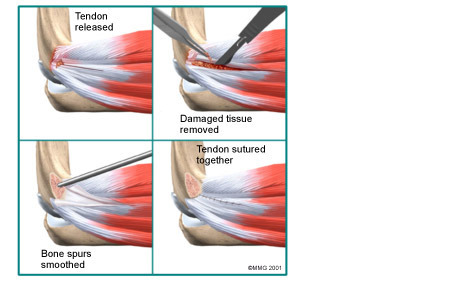
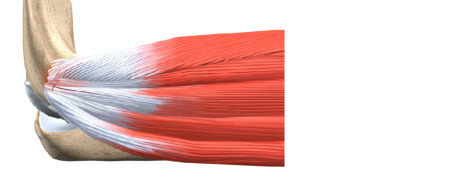
Portions of this document copyright MMG, LLC.
